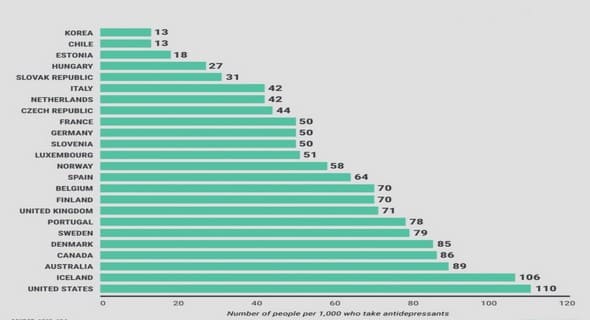(Downloads - 0)
For more info about our services contact : help@bestpfe.com
Table of contents
Chapter 1. Introduction
Chapter 2. Literature review
Diffusion in food packaging materials
2.1 Abstract
2.1.1 Introduction
2.1.2 The concepts of “generally recognized diffusion models” in legal US and EU
2.1.3systems
Some generalities about diffusion
2.1.42.1.4.1 Mass transfer from and to food packaging materials
2.1.4.1.1 Sorption of food constituent into food packaging: first observation of the reality of diffusion
2.1.4.1.2 Cross mass transfer in multicomponent food packaging systems
2.1.4.1.3 Mass transfer controlled by diffusion in the packaging materials
2.1.4.1.4 The concept of functional barrier
2.1.4.2 Molecular diffusion
2.1.4.2.1 A macroscopic definition
2.1.4.2.2 A microscopic definition
2.1.4.2.3 Trace diffusion and random walks
2.1.4.2.4 Mutual diffusion
2.1.4.3 Diffusion in thermoplastic and elastomers
Scaling laws and friction models
2.1.52.1.5.1 Overview
2.1.5.1.1 Hydrodynamic theory of diffusion
2.1.5.1.2 Theoretical composition laws for diffusants consisting in N repeated patterns
2.1.5.2 Experimental data of diffusion coefficients in solid polymers
2.1.5.2.1 Linear substances
2.1.5.2.2 Additive type substances
2.1.5.2.3 Combined effect of T, Tg and geometry
2.1.6.1 Common assumptions
2.1.6.2 Vrentas and Duda theory for rigid solutes
2.1.6.3 Extension to flexible solutes
Activation models and data
2.1.72.1.7.1 Apparent effects of temperature and pressure
2.1.7.2 Activation energies
2.1.7.2.1 Effect of the molecular mass
2.1.7.2.2 Polymer effects
2.1.7.2.3 Combined solute and polymer effects
Alternative models to predict D or to overestimate D
2.1.82.1.8.1 The justification of alternative models
2.1.8.2 Models overestimating D
2.1.8.3 Prediction of D based on decision trees and molecular descriptors
Conclusions
2.1.9 References
2.1.10 Barrier materials
2.2 Some definitions and choices
2.2.1 Non-reactive barrier systems
2.2.22.2.2.1 Overview
2.2.2.2 Common transfer models for passive/active systems
2.2.2.2.1 Out-of-equilibrium approaches
2.2.2.2.2 Approaches at equilibrium
2.2.2.3 Reported experimental performances of passive barrier systems
2.2.2.4 New concepts of active systems
Reactive barriers
2.2.32.2.3.1 The concept of sacrificial reagent to increase barrier properties
2.2.3.2 Performances of reactive barriers
Conclusions
Chapter 3. Objectives and approaches
General objectives
3.1 Particular objectives
III Approaches followed in this thesis
3.3Chapter 4. Materials and methods
CHapter 4 Materials
4.1 Solutes
4.1.1 Polymer
4.1.2 Nano-adsorbents
4.1.3 Polymer/nanocomposite film processing and formulation
4.1.44.1.4.1 Virgin films
4.1.4.2 Source films
4.1.4.3 Nanocomposite film processing
4.2 Differential scanning calorimetry (DSC)
4.2.1 Polarized optical microscopy
4.2.2 Measurement of diffusion coefficients
4.2.34.2.3.1 Single film imaging by DUV/fluorescence microspectroscopy
4.2.3.1.1 Sample preparation
4.2.3.1.2 Theoretical concentration profiles
4.2.3.1.3 Data analyzing
4.2.3.2 14 films contact method
4.2.3.2.1 Sample preparation
4.2.3.2.2 Theoretical concentration profiles
4.2.3.2.3 Data analyzing
Chapter 5. Results and discussion
Diffusion in bulk polymers
5.1 Beyond tortuosity: how negative correlations decrease D values with Non-obstacle related effects on D
5.1.1considered time scale
5.1.2 Study and model development
5.1.35.1.3.1 Abstract
5.1.3.3 Theory
5.1.3.3.1 Scaling of D with the number of jumping units and temperature for linear solutes
5.1.3.3.2 Conventional free-volume theories
5.1.3.3.3 Extended free-volume models for aromatic solutes in aliphatic polymers
5.1.3.3.4 Modeling of activation terms for oligophenyl solutes
5.1.3.4 Experimental section
5.1.3.4.1 Materials
5.1.3.4.2 Film processing and formulation
5.1.3.4.3 Methods
5.1.3.5 Results and discussion
5.1.3.5.1 Comparison of the scaling of D between linear aliphatic solutes and aromatic solutes
5.1.3.5.2 Scaling diffusion coefficients according to Eqs. (5-11), (5-30)-(5-31)
5.1.3.5.3 Polymer effects as probed with diphenyl alkanes
5.1.3.5.4 Solute activation parameters of oligophenyls
5.1.3.5.5 Mechanisms of translation of oligophenyls in aliphatic polymers
5.1.3.6 Conclusions
5.1.3.7 Author information
5.1.3.8 Acknowledgements
5.1.3.9 References
5.1.4 Characterization and thermodynamic properties of nano-clays
5.2 Introduction
5.2.1 Simulation and experimental study
5.2.25.2.2.1 Abstract
5.2.2.2 Introduction
5.2.2.3 Material and method
5.2.2.3.1 Materials
5.2.2.3.1.1 Nanoclay
5.2.2.3.1.2 Probe solutes
5.2.2.3.2 Material characterization
5.2.2.3.2.1 X-ray diffraction analysis (XRD)
5.2.2.3.2.2 Thermogravimetric analysis (TGA)
5.2.2.3.2.3 Specific surface area
5.2.2.3.3 Sorption properties at infinite dilution
5.2.2.3.4 Sorption isotherms of anisole
5.2.2.3.5 Molecular modeling strategies
5.2.2.3.5.1 Preparation of neat clay crystal structure
5.2.2.3.5.2 Preparation of surface modified clays
5.2.2.3.5.3 Sorption calculations at diluted state
5.2.2.3.5.4 Sorption calculations at concentrated state
5.2.2.3.5.5 Sorption properties of organic solutes in surfactants
5.2.2.4 Results and Discussion
5.2.2.4.1 Experimental characterization of clays
5.2.2.4.1.1 Organic composition
5.2.2.4.1.2 Gallery structure
5.2.2.4.2 Clay atomistic model and its characterization
5.2.2.4.3 Sorption properties at infinite dilution
5.2.2.4.3.1 Simulated Henry coefficient and isosteric heat of sorption
5.2.2.4.3.2 Comparison with experimental adsorption enthalpy
5.2.2.4.4 Sorption behavior at concentrated state
5.2.2.4.4.1 Simulated isotherms
5.2.2.4.4.2 Experimental sorption isotherms
5.2.2.4.4.3 Isosteric heats of sorption
5.2.2.5 Conclusions
5.2.2.6 References
Applications for developing polymer nanocomposite systems
5.2.3 Proof of the concepts of barrier materials including nano-
5.3adsorbents
5.3.1 Experimental study and interpretation
5.3.25.3.2.1 Abstract
5.3.2.2 Introduction
5.3.2.3 Theory of polymer barrier materials
5.3.2.3.1 Beyond tortuosity concepts.
VI 5.3.2.3.2 Reduction of D due to asymmetric barriers to translation: a two states toy model.
5.3.2.3.3 Inverse gas chromatrography (IGC) as a one-dimensional physical model.
5.3.2.3.4 D reduction due to entropic trapping: a first approach
5.3.2.4 Materials and methods
5.3.2.4.1 Polymer and nano-adsorbents.
5.3.2.4.2 Solute probes
5.3.2.4.3 Estimation of γi,MMT(T)
5.3.2.4.4 Estimation γi,P(T) by a generalized off-lattice Flory-Huggins method
5.3.2.4.5 Diffusion coefficient (D) determinations.
5.3.2.5 Results and discussion
5.3.2.5.1 Effect of crystallite morphology on diffusion coefficients
5.3.2.5.2 Partitioning between nanoclays and amorphous regions of PCL and PVA. 254
5.3.2.5.3 Reduction of diffusion coefficients in PCL nanocomposite.
5.3.2.5.4 Reduction of diffusion coefficients in PVA nanocomposite.
5.3.2.6 Conclusions
5.3.2.7 References
Does the nano-adsorbent concept work?
5.3.3 Extended results and discussion
5.4 The concept of increasing dwelling times to lessen D
5.4.1 Do we expect a change in the molecular mechanism of diffusion in presence 5
Chapter 6. Conclusions and perspectives
Overview
6.1 Diffusion of tracers in bulk polymers
6.2 A new concept of barrier material: chaotic materials
6.4Chapter
7. References


